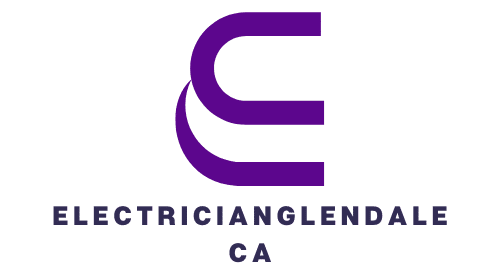What Are the Implications of Urban Vertical Farming for Real Estate Developers?

As urban areas become increasingly crowded, real estate developers are harnessing innovative ideas to maximize the use of available space. One such recent development is urban vertical farming, a high-tech strategy aimed at integrating sustainable agriculture into city landscapes. The concept of vertical farming has become increasingly popular, especially with the ever-growing demand for local, organic produce, and the need for sustainable food production systems. This article explores the implications of urban vertical farming for real estate developers.
The Concept of Urban Vertical Farming
Vertical farming is a method of urban agriculture that involves growing crops in vertically stacked layers. In contrast to traditional farming, these vertical farms can be built within high-rise buildings or used shipping containers, taking farming off the land and into the urban environment.
En parallèle : How Can Real Estate Professionals Utilize 360-Degree Photography for Virtual Tours?
The benefits of vertical farms include the ability to grow food year-round, without the need for fertile land and under controlled conditions. These farms are typically hydroponic or aeroponic systems, which use up to 95% less water than traditional farming methods. This method of farming also reduces the distance food travels from farm to consumer, thereby cutting down on greenhouse gas emissions associated with food transportation.
The technological advancements, combined with the sustainability of vertical farming, make it an attractive proposition for real estate developers. By incorporating these farms into their buildings, developers can create a unique selling point and potentially increase the value of their properties.
En parallèle : What Are the Trends and Challenges in Developing Floating Homes in the UK?
How Vertical Farming is Reshaping the Real Estate Landscape
The integration of vertical farming into urban buildings is beginning to reshape the real estate landscape. Particularly in cities where land is scarce and expensive, vertical farming offers a solution to the challenge of producing more food with less land.
An added advantage for real estate developers is the potential to attract a new demographic of buyers. Urbanites are increasingly showing interest in sustainable lifestyles, which includes consuming locally-sourced, organically grown food. By integrating a vertical farm into a residential or commercial building, developers can offer tenants the ability to grow and consume their own fresh produce.
In addition to this, vertical farms can contribute to a building’s energy efficiency. For instance, they can act as a form of insulation, helping to regulate the temperature within the building and thus reducing energy costs.
Vertical Farming and Sustainability
Vertical farming is paving the way towards a more sustainable future in agriculture. Given the mounting concerns over climate change and the increasing need for sustainable practices, urban vertical farming could be a game-changer for the real estate industry.
For real estate developers, the introduction of vertical farming could minimize their ecological footprint. By incorporating vertical farming into their designs, developers are not only maximizing the use of available space but also contributing to local food security and reducing the environmental impact of the food supply chain.
In addition, vertical farming systems can contribute to the sustainability of a building by promoting water and energy efficiency. The controlled environment in vertical farms enables the recycling of water, thus significantly reducing water usage. Similarly, LED lighting used in vertical farms consumes less energy and lasts longer than traditional lighting systems.
Economic Implications for Real Estate Developers
Incorporating vertical farming into real estate developments can lead to potential economic benefits. With the growing demand for locally sourced, organic food, vertical farms could become a lucrative addition to urban real estate projects.
Tenants in vertical farming buildings could save money on groceries by growing their own produce. This not only makes the building more appealing to a potential buyer but could also allow developers to charge a premium for these properties. Also, the farm could become a source of income if the produce is sold to local restaurants or markets.
In addition, developers could benefit from potential tax incentives or grants for incorporating sustainable practices into their projects.
However, it’s worth noting that integrating vertical farming into buildings also comes with significant costs. These include the initial set up cost of the farming system, ongoing maintenance, and potentially higher energy costs. Therefore, developers need to consider these factors in their financial planning.
Future Prospects for Vertical Farming in Real Estate
While still in its early stages, vertical farming holds promise for the future of urban real estate. As cities continue to expand and the demand for fresh, local produce grows, vertical farming could become a standard feature in urban buildings.
Developers who are early adopters of this sustainable innovation may benefit from a competitive advantage in the real estate market. Moreover, as technology improves and costs come down, vertical farming could become a more feasible and attractive option for developers.
In the long run, vertical farming could lead to a fundamental shift in the way we think about urban development and agriculture, and its implications for the real estate industry will be interesting to watch.
Vertical Farming: A Game-Changer for Urban Planning and Design
In the context of urban planning and design, vertical farming can significantly alter the way we perceive and utilize space. Traditionally, farming and real estate development have been seen as separate entities, with the former mostly confined to rural areas, and the latter focused on urban regions. However, vertical farming is challenging these preconceptions, bringing farming into the heart of urban areas through a blend of agriculture and architecture.
Vertical farms are not just about producing food. They are a part of a greater movement towards sustainable urban development, incorporating the principles of efficiency, aesthetics, and conservation. By integrating vertical farms into buildings, developers can create multi-functional spaces that provide food, enhance the aesthetic appeal, and promote sustainability.
Furthermore, vertical farms can play a crucial role in mitigating the effects of climate change. They can help to sequester carbon dioxide, thereby reducing greenhouse gas emissions. Vertical farms can also help to alleviate urban heat island effects by providing green cover in concrete jungles.
From an urban planning perspective, vertical farms help promote local food production and food security. By growing food locally, it is possible to reduce reliance on long-distance food supply chains and to provide fresher, healthier food options for urban residents. Increased accessibility to fresh produce can also have an indirect impact on public health, potentially reducing diet-related health issues.
The Impact of Vertical Farming on Commercial Real Estate
In the sphere of commercial real estate, vertical farming presents new opportunities and challenges. On the one hand, it offers a unique value proposition – the promise of fresh, local produce grown right in the heart of a city. This can be particularly attractive in urban areas where access to fresh produce is limited.
Incorporating vertical farms into commercial buildings can also help to attract a new demographic of tenants who are interested in green living and sustainability. Indoor farming in commercial spaces can even serve as a unique selling point, helping to differentiate properties in a competitive real estate market.
However, it’s also important to keep in mind that implementing vertical farming in commercial buildings is not without its challenges. The initial set-up costs can be quite high, and there may be ongoing operational costs associated with maintaining the farming systems. These costs need to be weighed against the potential benefits.
There may also be regulatory challenges. For example, building codes and zoning regulations may need to be updated to accommodate vertical farms. In the future, we could potentially see the emergence of new zoning categories for buildings that include vertical farms.
Conclusion: Future Trajectories of Vertical Farming in Urban Real Estate
As we look towards the future, vertical farming offers intriguing possibilities for urban real estate. The convergence of farming and real estate creates opportunities for innovation and growth, but also presents new challenges that need to be addressed.
As more developers embrace the concept of vertical farming, we can expect to see more buildings incorporating vertical farms into their design. This could lead to an uptick in sustainable urban development practices, with vertical farms becoming a common feature of the urban landscape.
However, for this to become a reality, there are hurdles that need to be overcome. From a regulatory perspective, there needs to be a greater understanding and accommodation of vertical farming within urban planning and building regulations. Financially, the costs associated with setting up and running vertical farms need to be weighed against the potential benefits.
Despite these challenges, the promise of vertical farming is compelling. As technology continues to evolve, it will be interesting to see how vertical farming continues to impact the real estate industry. The potential for a greener, more sustainable future is exciting, and vertical farming could play a key role in making this vision a reality.
